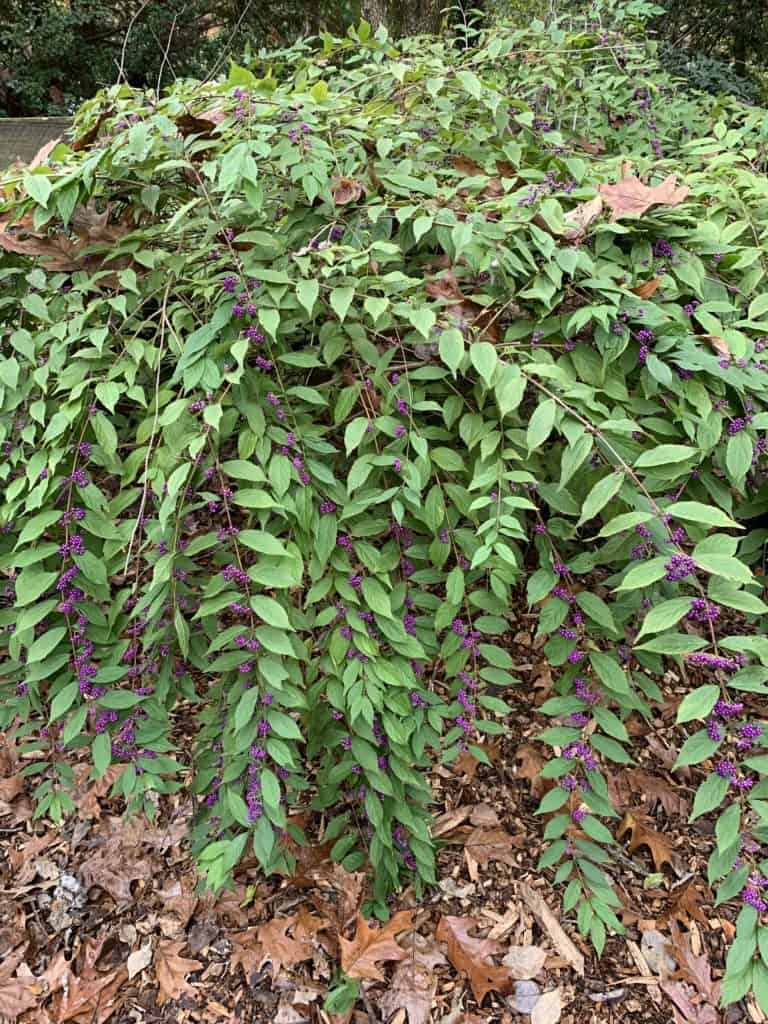Gardening for Health

Beautyberry Steals the Show
By Maria Price
Beautyberry comes into its name starting in mid- to late-October. Its long arching wands of neon purple berries that look artificially painted always attract attention. There is a white form that looks like strings of miniature white pearls.
Callicarpa or beautyberry is a genus of shrubs and small trees in the family Lamiaceae. They are mostly native to east and southeast Asia where the majority of the species occur, Australia, Madagascar, southeast North America and South America.
American beautyberry (Callicarpa americana) is native to the southeastern United States. It can reach 3 to 6 feet in height. The berries are edible and a jelly can be made from them. Ornamental varieties have been bred to have pink berries. The seeds and berries are important foods for many species of birds, particularly the northern bobwhite.
Bodinier’s beautyberry (Callicarpa bondinieri) is native to western central China and more tolerant of cold than C. americana and is the species most widely cultivated in northwestern Europe. Japanese beautyberry (Callicarpa japonica) is native to Japan, China and Korea.
American beautyberry has been used as a folk remedy to prevent mosquito and tick bites. Four chemicals isolated from callicarpa have been shown to act as insect repellents: borneol, callicarpenal, intermedol and spathulenol. The use of callicarpenal has been patented by the USDA’s agricultural research service as a mosquito repellent.
According to a July 2020 story on ScienceDaily.com, the American beautyberry was an important medicinal plant for native Americans prompting researchers to investigate its chemical properties. Scientists discovered a compound in the leaves that boosts an antibiotic’s activity against antibiotic-resistant staph bacteria. The compound belongs to a group of chemicals known as clerodane diterpenoids, some of which are used by plants to repel predators.
According to the Centers for Disease Control, at least 2.8 million people get an antibiotic-resistant infection annually in the U.S.
Laboratory experiments showed that the plant compound works in combination with oxacillin to knock down the resistance to the drug of methicillin-resistant Staphylococcus aureus, or MRSA. The American Chemical Society’s Infectious Diseases published the finding, led by scientists at Emory University and the University of Notre Dame.
That’s another beautiful benefit of the American beautyberry.
